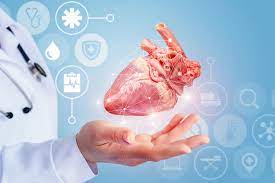Innovative techniques in cardiology are reshaping the landscape of heart care, introducing methods that improve both diagnosis and treatment. These advancements aim to enhance patient outcomes while reducing recovery times, offering new possibilities within cardiovascular health management. Whether addressing complex conditions or routine procedures, understanding these innovations can help patients make informed decisions about their care.
What Are Today’s Key Innovations?
Technological advancements have introduced several breakthrough techniques in cardiology. From improved imaging tools to advanced treatments, these innovations improve accuracy, efficiency, and accessibility. Below are some key innovations transforming cardiovascular care:
- Wearable Heart Monitors: Devices like smartwatches and compact heart monitors enable continuous tracking of heart rhythms, providing valuable data on conditions such as arrhythmias. These tools enable patients to monitor their health in real-time.
- 3D Printing for Cardiac Models: This technology enables cardiologists to create detailed models of a patient’s heart, allowing for highly personalized surgical planning and enhanced training for medical teams.
- Heart Valve Replacement Without Open Surgery: Techniques such as transcatheter aortic valve replacement (TAVR) offer an alternative to standard surgical operations for valve repair or replacement. This approach helps reduce risks associated with open-heart surgery.
- Robotic-Assisted Procedures: Robotic systems enhance precision in surgeries, leading to smaller incisions, faster recovery times, and reduced risks of complications. They are particularly useful for tasks requiring fine movements.
- Advanced Imaging Technologies: Innovations such as cardiac MRIs and 4D CT scans provide detailed views of the heart. These tools enhance the accuracy of both diagnoses and treatment plans by providing clearer visual representations of cardiovascular conditions.
How Do Advances Aid Recovery?
Modern cardiology treatments are designed not only to address medical issues but also to support faster and less burdensome recovery processes. Many of the latest techniques prioritize minimally invasive approaches, which decrease physical strain on the patient during and after procedures. Shorter hospital stays are one significant benefit of these advancements. Treatments like catheter-based interventions often allow patients to return home within one or two days. They require smaller incisions and involve less extensive physical trauma compared with traditional surgeries.
Patient monitoring has also seen significant advancement. Remote monitoring systems help track recovery progress, enabling care providers to detect issues early. This contributes to greater convenience and potentially reduces the number of follow-up appointments. By emphasizing efficiency alongside effectiveness, these developments are transforming recovery times and patient experiences.
Which Minimally Invasive Options Exist?
Minimally invasive techniques in cardiology have gained popularity due to their specific focus on minimizing physical impact. They offer alternatives to traditional surgeries while achieving similar results in treating cardiovascular conditions. Some of these options include:
- Balloon Angioplasty: A catheter with a small balloon is inserted into blocked arteries. Once inflated, the balloon widens the artery, improving blood flow.
- Transcatheter Aortic Valve Replacement (TAVR): This procedure involves placing a new valve using a catheter. TAVR eliminates the need for chest incisions required in open-heart surgery.
- Cryoablation for Arrhythmias: This minimally invasive procedure utilizes cold temperatures to target and ablate abnormal heart tissue that contributes to arrhythmias.
- Left Atrial Appendage Closure: This option is designed to reduce the risk of stroke for patients with certain arrhythmias. It closes off part of the heart where clots tend to form, without the need for lifelong blood thinners.
By reducing the demand for large incisions and extensive recovery, such techniques prioritize patient comfort while still delivering effective results.
Consult a Cardiology Specialist
Cardiovascular care is advancing at a faster pace than ever before, providing patients with more choices and greater control over their health. Learning about these techniques can form the foundation for productive discussions with a provider. If you are exploring treatments or looking for advice on managing your heart health, consult a cardiologist. They can guide you toward the best current options tailored to your unique circumstances, using the latest in cardiology to support your well-being.

